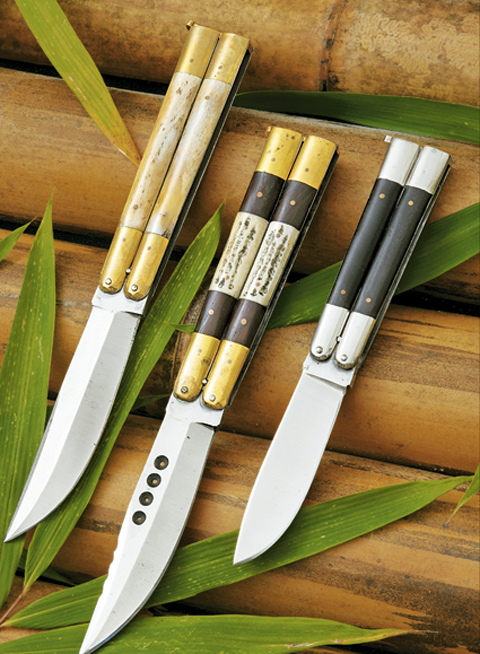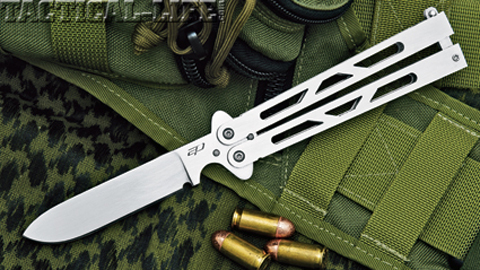2012年04月22日
Aussie Top Shots
私たちのブログを訪問していただきありがとうございます。あなたがお持ちの場合DIYの要求は私達に電子メールを送信してください。
Defence Force Diggers take their small arms training to the peak of potency!

Image: (U.S. Air Force photo by Tech. Sgt. Jeremy Lock) (Released)
I was first acquainted with the Australian military’s small arms program through the U.S. Army Reserve Shooting Team. Having competed with their shooters at NATO-sponsored events, I found them to be quite skilled. That’s no surprise—all the major member states of the Commonwealth have first-class militaries. In fact, the procedures and courses of fire that comprise NATO combat competition were first invented in the Commonwealth and these soldier-shooters are the ones to beat. During a visit to Victoria, I had a chance to visit three Australian military facilities.

Australian-issued F89 machine guns (FN Minimi or M249) wear the same optic as the F88. ADF troops use this as an automatic rifle like U.S. forces, but some consider the Aussies’ training approach to be a bit more rigorous.
The Australian Defence Force (ADF) consists of the Australian Army, Royal Australian Navy and Royal Australian Air Force (RAAF). The ADF has a strength of almost 60,000 full-time active-duty personnel, 22,000 active reserves and 22,000 standby reserves. While small by U.S. and Asian standards, the ADF is technologically sophisticated and, man-for-man, rivals the best militaries around the world in terms of equipment and training. The ADF is supported by a significant budget and the ability to deploy worldwide.

The ADF recognizes up to a dozen official qualification courses for each weapon. These LF (Live Fire) courses for rifle, automatic rifle and pistol are chosen based on the individual soldier’s unit of assignment.
Australia’s military program began in January 1901 upon becoming an independent nation. In 1911, the Royal Australian Navy was formed, and the Royal Australian Air Force was established in 1921. Initially, the services reported to separate ministers. A common chain of command was realized after Vietnam with the creation of Chief of the Defence Force Staff and official formation the Australian Defence Force in 1976.

As with other Commonwealth militaries, the ADF still maintains good gunnery skills for MGs. Gun teams learn gunnery from the bipod and tripod for sustained fire.
By John M. Buol, Jr.
BLOG ARCHIVES

2012年04月22日
Black Rifle Company SASS 6.8 SPC
私たちのブログを訪問していただきありがとうございます。あなたがお持ちの場合DIYの要求は私達に電子メールを送信してください。
Semi Automatic Sniper System boasting tactical advantages through innovation!
When the SASS (Semi Automatic Sniper System) was originally developed as a 7.62×51mm NATO rifle for the U.S. Military. Its intended purpose was to provide a reliable semi-automatic precision rifle in a familiar platform that could be issued on a wider basis. While the bolt rifle has its place, our current area of operation is not always conducive to the lower rate of fire and magazine capacity. It also requires specialty training, as it is a completely different platform. By using what is easily the most familiar rifle platform our troops have, the train-up is far less. There was also the added benefit of magazines and other interchangeable items in inventory from the Mk 11 Mod 0 project.

Black Rifle Company’s SASS is accurate, reliable, and true to the Semi Automatic Sniper System concept, shown here with a Leupold Mark AR scope and GG&G XDS bipod.
Although a typical SASS-style rifle is probably not as pinpoint-accurate as a bolt gun, it is pretty close. Semi-automatic precision rifles have come a long way, and there are several solid versions inspired by this rifle in various chamberings. Priced comparably with many other AR-type rifles that yield precision accuracy, they have become truly versatile systems. It really has opened the platform up to the police world, a world where the semi-auto sniper rifle is still quite rare.

Scoped AR type rifles like the SASS really need an extended charging handle to work properly, allowing it to be operated around the optics.

The high-quality quad rail is perfectly suited to this rifles mission. There was plenty of rail space for accessories yet a nice soft area for precision hand holds from positions other than prone.

A simple birdcage flash suppressor was provided, but other flash suppressors or muzzle brakes are available by request and can be added as necessary.

Leupold’s Mark AR scope is very simple, lightweight and well suited to just about any tactical environment. The glass is clear and the mil-dot reticle remains a favorite of many operators.
By Dave Bahde, Images by Sean Utley
BLOG ARCHIVES

Semi Automatic Sniper System boasting tactical advantages through innovation!
When the SASS (Semi Automatic Sniper System) was originally developed as a 7.62×51mm NATO rifle for the U.S. Military. Its intended purpose was to provide a reliable semi-automatic precision rifle in a familiar platform that could be issued on a wider basis. While the bolt rifle has its place, our current area of operation is not always conducive to the lower rate of fire and magazine capacity. It also requires specialty training, as it is a completely different platform. By using what is easily the most familiar rifle platform our troops have, the train-up is far less. There was also the added benefit of magazines and other interchangeable items in inventory from the Mk 11 Mod 0 project.

Black Rifle Company’s SASS is accurate, reliable, and true to the Semi Automatic Sniper System concept, shown here with a Leupold Mark AR scope and GG&G XDS bipod.
Although a typical SASS-style rifle is probably not as pinpoint-accurate as a bolt gun, it is pretty close. Semi-automatic precision rifles have come a long way, and there are several solid versions inspired by this rifle in various chamberings. Priced comparably with many other AR-type rifles that yield precision accuracy, they have become truly versatile systems. It really has opened the platform up to the police world, a world where the semi-auto sniper rifle is still quite rare.

Scoped AR type rifles like the SASS really need an extended charging handle to work properly, allowing it to be operated around the optics.

The high-quality quad rail is perfectly suited to this rifles mission. There was plenty of rail space for accessories yet a nice soft area for precision hand holds from positions other than prone.

A simple birdcage flash suppressor was provided, but other flash suppressors or muzzle brakes are available by request and can be added as necessary.

Leupold’s Mark AR scope is very simple, lightweight and well suited to just about any tactical environment. The glass is clear and the mil-dot reticle remains a favorite of many operators.
By Dave Bahde, Images by Sean Utley
BLOG ARCHIVES

2012年04月22日
Back to Batangas
私たちのブログを訪問していただきありがとうございます。あなたがお持ちの場合DIYの要求は私達に電子メールを送信してください。
Searching for the few remaining Filipino balisong craftsman!
Before the arrival of spring-assisted or fully automatic pocket knives, before manufacturers started putting holes in their blades and thumb studs, there was the original one-handed opening knife. The Balisong is a folding pocket knife with two handles counter-rotating around the tang. When closed, the blade is concealed within grooves in the handles. This is loosely known as a butterfly knife.
The Filipino Balisong knife was spread around the world by American soldiers returning from World War II. Translated from Tagalog, the word “Balisong” means “broken horn,” as the original Balisongs were made from.
A town in Batangas, known as Barrio Balisong, is where legend Perfecto de Leon is credited with developing and manufacturing the first Filipino version of the Balisong knife in 1905. Since then, the Balisong has become perhaps the most infamous Filipino weapon to date. Locals in the Philippines are much more likely to carry knives than guns. Knives are commonly carried as tools by farmers and used by street vendors to prepare coconuts, pineapples, other fruits and meats. This has led to the Philippines being known as a ‘blade culture,” so much to the point that the neighboring country of Palau has a term for Filipinos: chad ra oles, which literally means “people of the knife.”

Three Batangas Balisongs from Ona’s shop. All handcrafted from 5160 spring steel and using various materials for the handle scales ranging from Kamagong wood to horse and deer bone.

This is the model AP2 made by Armand Palacio. Like the AP1, it is also made from D2 steel and features titanium handles with a very unique pattern cut into the handles, yet another stamp of Armand’s distinct style.

At the shop, Ona displays his lightning fast speed as the author’s camera struggled to capture it. He is known for his two-handed deployment of the Balisongs simultaneously. In the background hanging, many other tools can be seen that are both for sale and collectables including US bayonets and machetes.
From tactical-life
BLOG ARCHIVES

Searching for the few remaining Filipino balisong craftsman!
Before the arrival of spring-assisted or fully automatic pocket knives, before manufacturers started putting holes in their blades and thumb studs, there was the original one-handed opening knife. The Balisong is a folding pocket knife with two handles counter-rotating around the tang. When closed, the blade is concealed within grooves in the handles. This is loosely known as a butterfly knife.
The Filipino Balisong knife was spread around the world by American soldiers returning from World War II. Translated from Tagalog, the word “Balisong” means “broken horn,” as the original Balisongs were made from.
A town in Batangas, known as Barrio Balisong, is where legend Perfecto de Leon is credited with developing and manufacturing the first Filipino version of the Balisong knife in 1905. Since then, the Balisong has become perhaps the most infamous Filipino weapon to date. Locals in the Philippines are much more likely to carry knives than guns. Knives are commonly carried as tools by farmers and used by street vendors to prepare coconuts, pineapples, other fruits and meats. This has led to the Philippines being known as a ‘blade culture,” so much to the point that the neighboring country of Palau has a term for Filipinos: chad ra oles, which literally means “people of the knife.”

Three Batangas Balisongs from Ona’s shop. All handcrafted from 5160 spring steel and using various materials for the handle scales ranging from Kamagong wood to horse and deer bone.

This is the model AP2 made by Armand Palacio. Like the AP1, it is also made from D2 steel and features titanium handles with a very unique pattern cut into the handles, yet another stamp of Armand’s distinct style.

At the shop, Ona displays his lightning fast speed as the author’s camera struggled to capture it. He is known for his two-handed deployment of the Balisongs simultaneously. In the background hanging, many other tools can be seen that are both for sale and collectables including US bayonets and machetes.
From tactical-life
BLOG ARCHIVES


